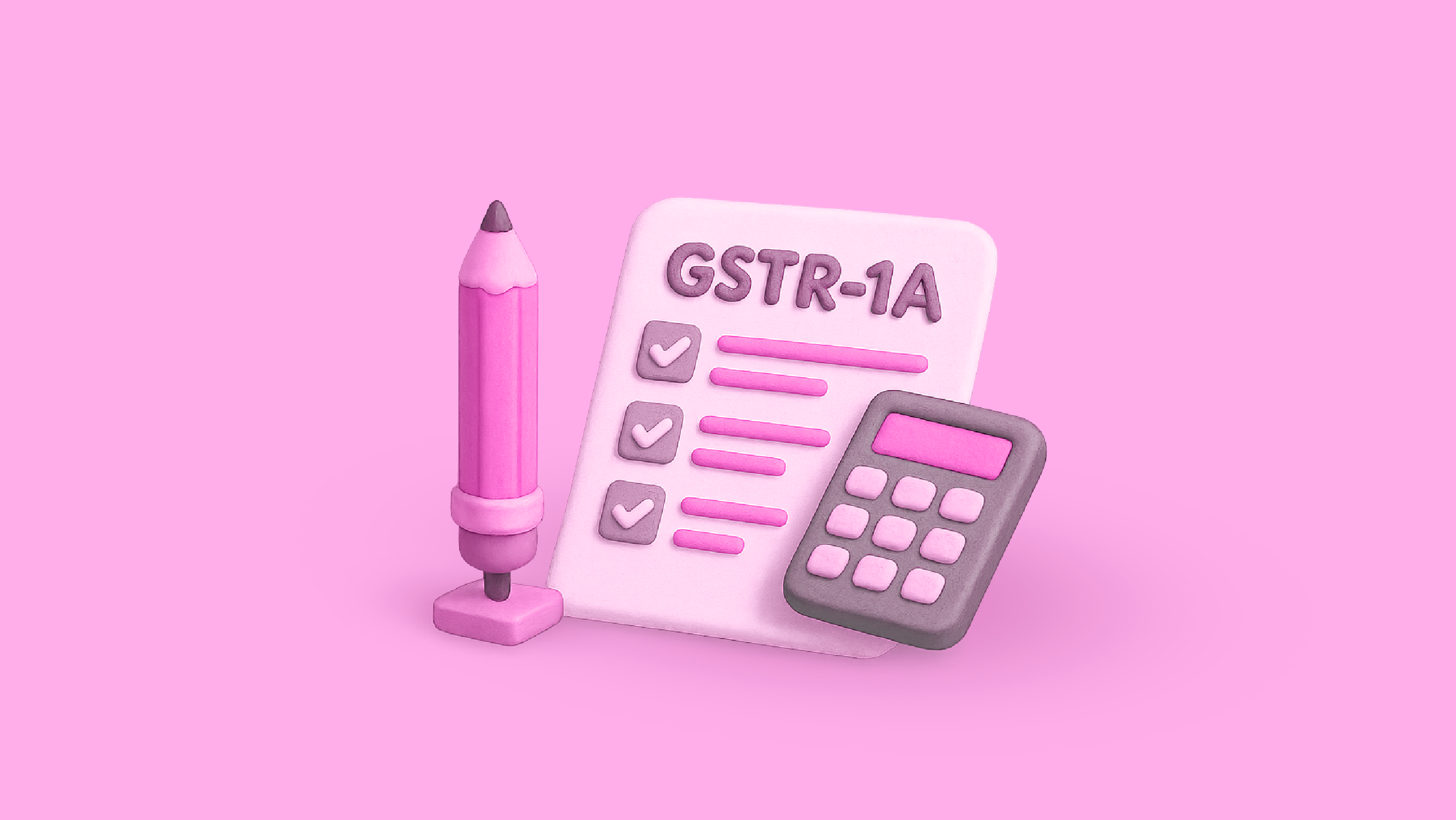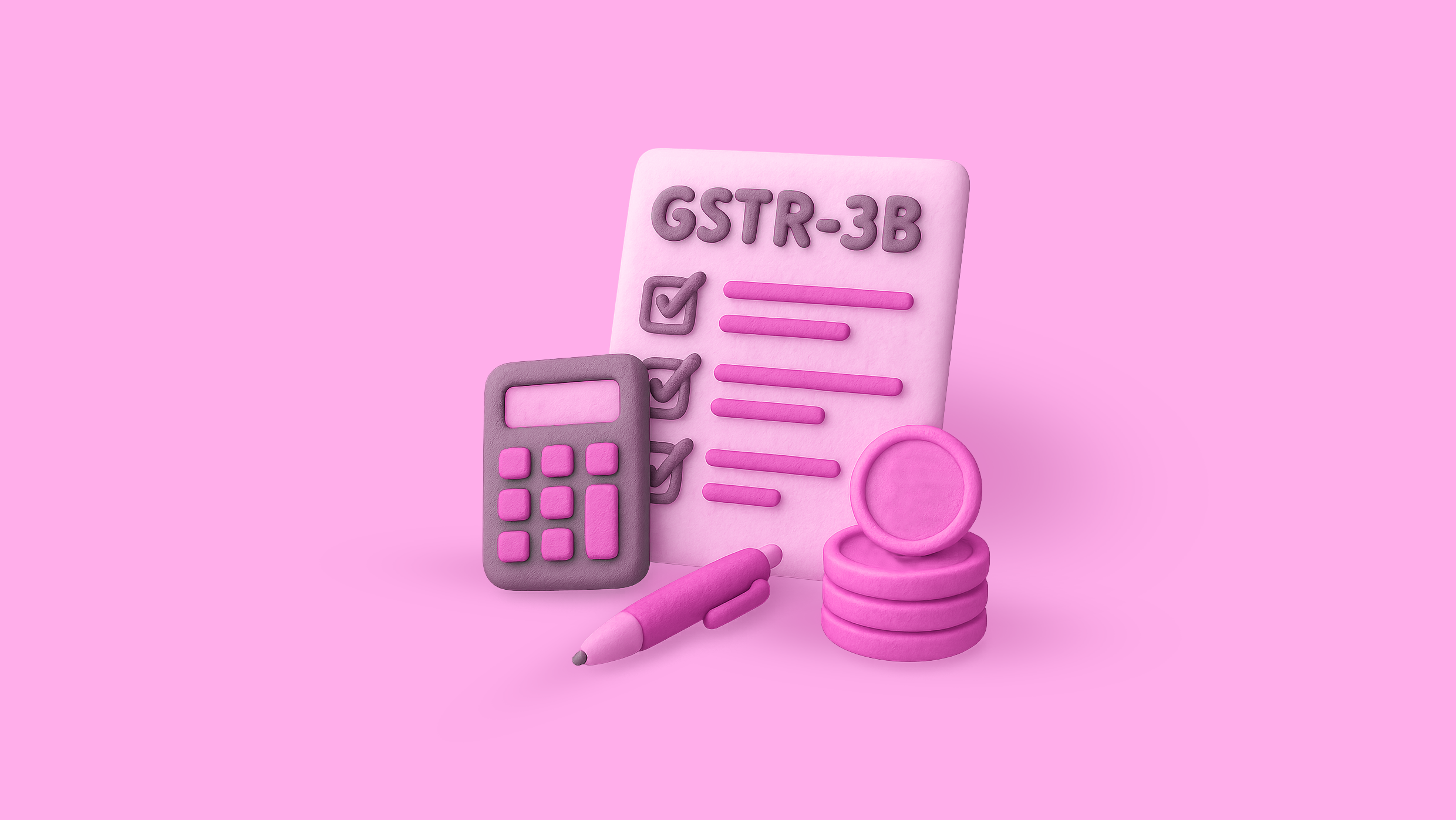GSTR‑1A is a new GST return form introduced in mid‑2024 under Notification No. 12/2024 (Rule 59) by the Central Board of Indirect Taxes and Customs. It allows taxpayers to make amendments or additions to their already‑filed GSTR‑1 within the same tax period, before filing GSTR‑3B. The changes reflect automatically in the supplier’s GSTR‑3B return.
For businesses and tax professionals alike, understanding the purpose, scope, and timelines of this form is critical for maintaining accurate GST returns and avoiding reconciliation errors.
In this detailed guide, we explore what GSTR-1A is, how and when to file it, and how it can help improve compliance outcomes for your business.
What Is GSTR-1A?
GSTR-1A is a supplementary return form under GST that allows registered taxpayers to amend or add supply records already submitted in GSTR-1, provided those changes are made within the same tax period and before filing GSTR-3B.
The feature is especially useful for correcting:
- Mistaken invoice values
- Missed outward supplies
- Amendments based on feedback from recipients (e.g., invoice mismatches in GSTR-2A)
Real-World Example
Let’s say you filed your GSTR-1 for August 2024 on 10th September. Later, you discover that:
- Two invoices were incorrectly reported
- One outward supply was omitted
You can amend the incorrect records and add the missing one in GSTR-1A, which will be opened for you on the later of:
- 10th September (actual GSTR-1 filing date), or
- 11th September (due date for GSTR-1)
These changes, once accepted, will auto-reflect in your GSTR-3B, ensuring accurate tax liability reporting.
Who Should File GSTR-1A?
GSTR-1A is optional and intended for:
- Monthly filers and quarterly filers who discover errors or omissions after filing GSTR-1 but before filing GSTR-3B.
- Taxpayers wanting to amend only current period data (amendments to past periods must be done in subsequent GSTR-1 filings).
July 2025 Update: GSTR‑3B Will Become Non-Editable
Until now, taxpayers had the flexibility to edit auto-populated tax liability in GSTR-3B, even after it was pulled in from GSTR‑1. But from the July 2025 tax period (returns filed in August 2025), this will change.
The GST portal will still generate a pre-filled GSTR‑3B, but the auto-populated liability fields will be locked, they cannot be edited.
This means: what you file in GSTR‑1 is what you’ll pay in GSTR‑3B, unless corrected beforehand using GSTR‑1A.
In simple terms, the new flow will be:
GSTR-1 → GSTR-1A (if needed) → GSTR-3B
No changes can be made to GSTR-3B after filing.
When Is GSTR-1A Available?
GSTR-1A becomes available after GSTR-1 is filed, but before GSTR-3B is filed for the same tax period.
For Monthly Filers:
Available from the later of:
- 11th of the following month (GSTR-1 due date), or
- Actual GSTR-1 filing date, until GSTR-3B for that month is filed.
For Quarterly Filers:
Available from the later of:
- 13th of the month following the quarter
- Actual GSTR-1 filing date, until GSTR-3B for that quarter is filed.
Is There a Due Date for GSTR-1A?
There is no fixed due date, but you must file it before filing GSTR-3B of the same tax period. Once GSTR-3B is submitted, GSTR-1A cannot be filed for that period.
Important Functional Rules for GSTR-1A
| Scenario | Can You Do It in GSTR-1A? |
| Add a missed record from the same month | Yes |
| Amend a record from a past tax period | No (Use upcoming GSTR-1) |
| Add credit/debit notes | Yes |
| Change recipient GSTIN | No (Use future GSTR-1) |
| Amend IFF-recorded entries (M1 or M2) for QRMP filers | Yes |
| File NIL GSTR-1A | Not allowed |
| File more than once per period | Only once per tax period |
GSTR‑1A only allows changes for the current tax period. For earlier periods, amendments must be made in the next GSTR‑1.
What If GSTR-1A Is Saved but Not Filed?
If you save records in GSTR-1A but don’t file, and attempt to file GSTR-3B, the system will throw an error. You must either:
- File GSTR-1A,
- Delete saved records in GSTR-1A, or
- Reset the form
Only then can GSTR-3B be submitted.
Best Practices for GSTR-1A Filing
- Review GSTR-1 carefully before submission to minimize the need for GSTR-1A.
- Use reconciliation tools to catch mismatches between your data and GSTR-2A.
- File GSTR-1A early, ideally before the 16th or 17th of the month to avoid overlaps with GSTR-3B.
- Keep audit trails of all changes for future reference and compliance checks.
Final Thoughts
With the introduction of GSTR-1A, the GST system has taken a big step toward error correction within the same period, minimizing reconciliation mismatches and improving overall data consistency. While optional, GSTR-1A is a powerful form that can save taxpayers from downstream issues related to Input Tax Credit, mismatched filings, or tax liability errors.
By using it strategically and on time, businesses can maintain a healthier compliance score and avoid unnecessary regulatory headaches.





